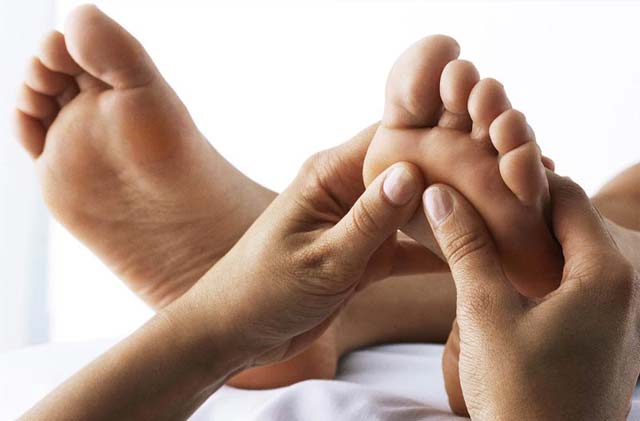

“An indulgence I would never forego is my Saturday-morning reflexology session with Jessica Appleby. I believe feet have special powers, and the session keeps me sane.”
Sandra Choi
Creative Director, Jimmy Choo

the ancient art of reflexology
Reflexology is an ancient art of healing dating back around 5 thousand years, with records of its practise in both early Egypt and China.
All around the world today people are benefiting from this deeply relaxing treatment. It is non evasive and one of the most powerful of the complimentary therapies. It's popularity continues to grow with it now being offered in many hospitals around the country to help patients and compliment modern medicine.
In 1913 Dr. Fitzgerald an American ear, nose and throat surgeon studied the theory behind reflexology after noting by chance that pressure applied on specific areas of the body had an anaesthetic effect on another area of the body. He continued his studies, developing what was later named ‘zone theory’, and charted this with a diagram showing the 10 equal vertical zones of the body.
In the 1930's Eunice Ingham, a physiotherapist from South Dakata went on to develop Dr. Fitzgerald's findings further. Eunice spent many hours probing the feet, finding tender spots and equating them to specific areas of the body. From her findings she went on to refine and map the areas of the foot specifically, showing all the corresponding organs and glands. Along side her studies she devised a system of techniques that enabled a practitioner to locate and manipulate each reflex effectively to help alleviate a client’s symptoms. This became reflexology as we know it today.
Eunice devoted forty years of her life to the study and development of reflexology going on to founder the Institute of Reflexology alongside her nephew Dwight Byers. She lectured extensively on reflexology and went on to publish two books ‘Stories the feet can tell’ and ‘stories the feet have told’. Her nephew Dwight Byers has carried on her work and is currently president of the Institute today.
